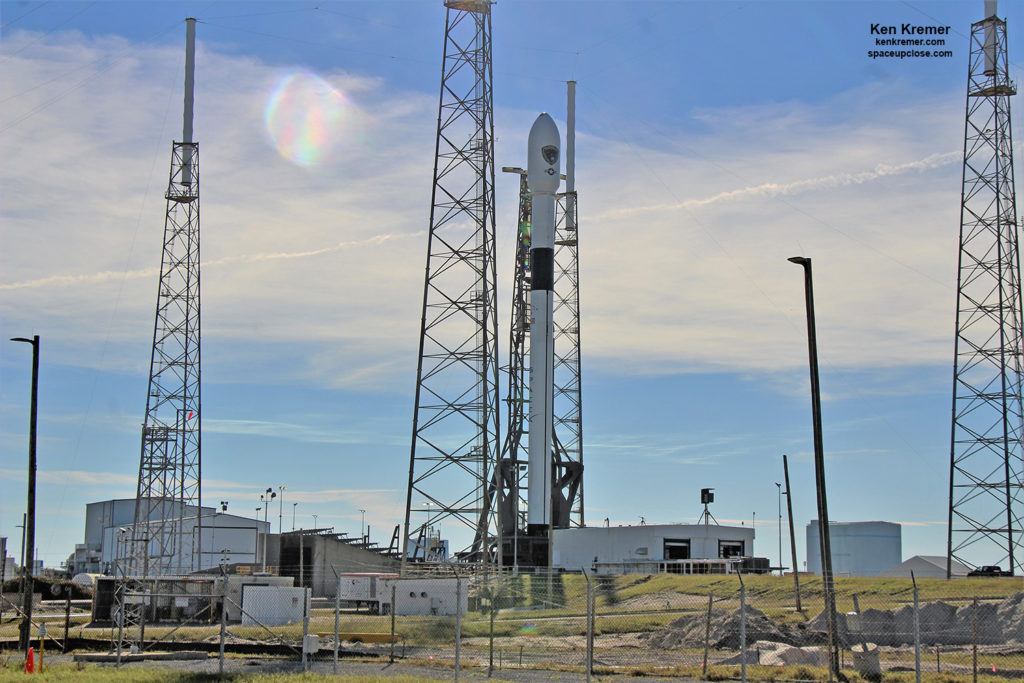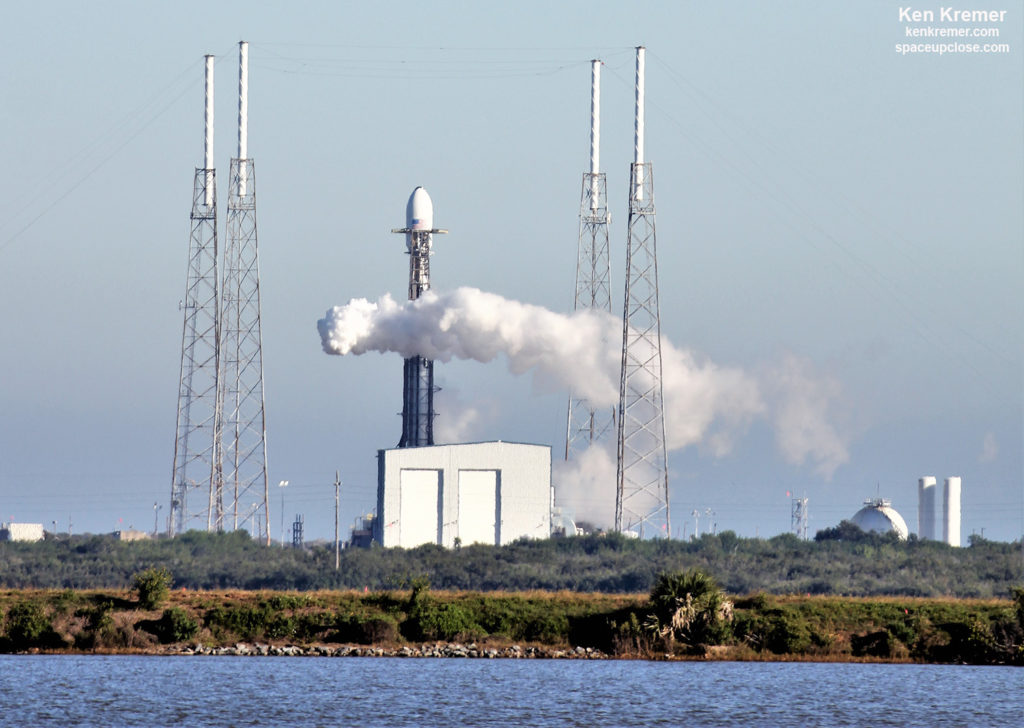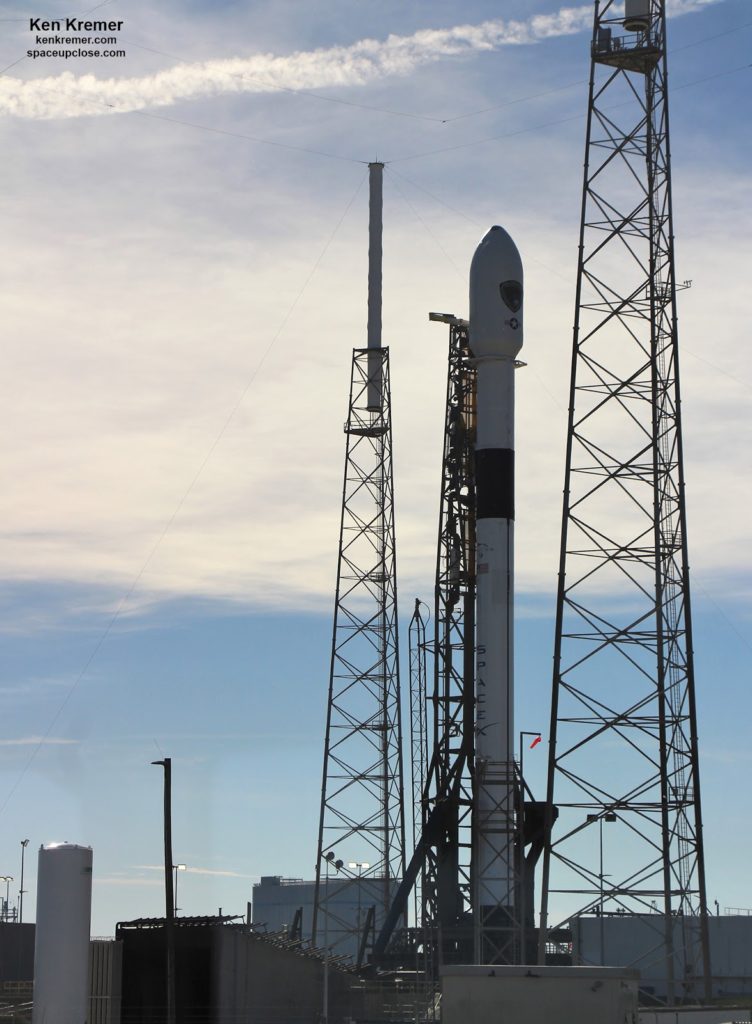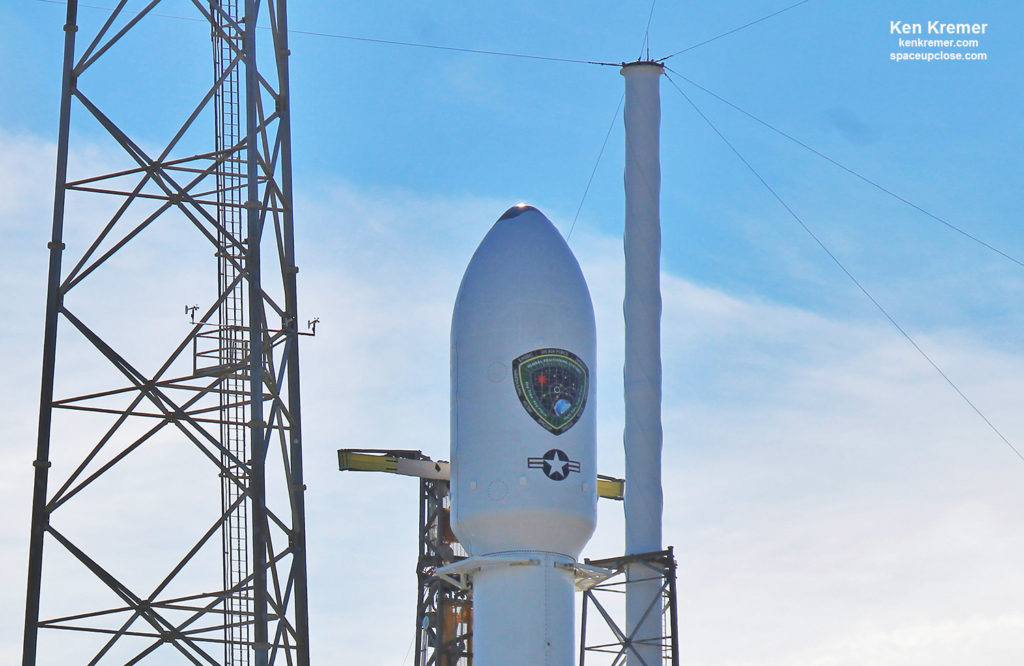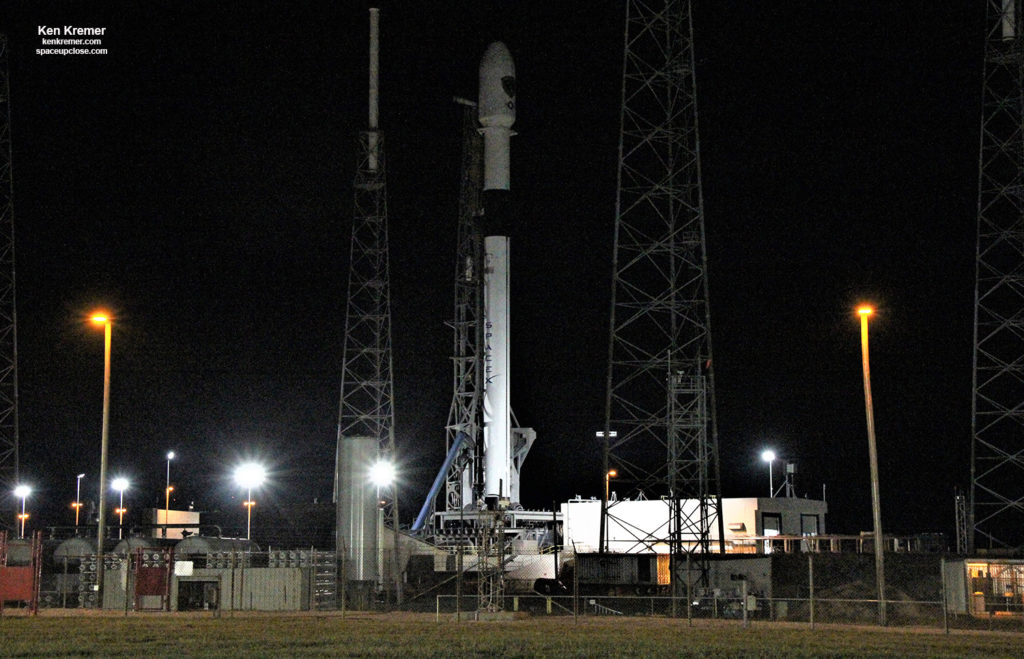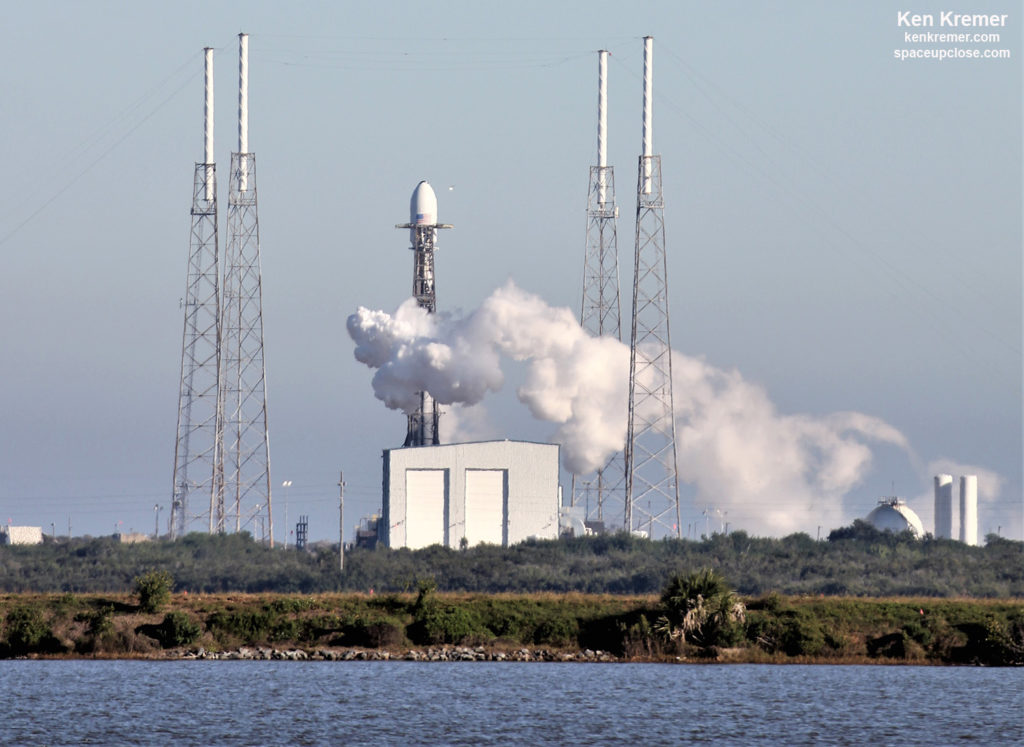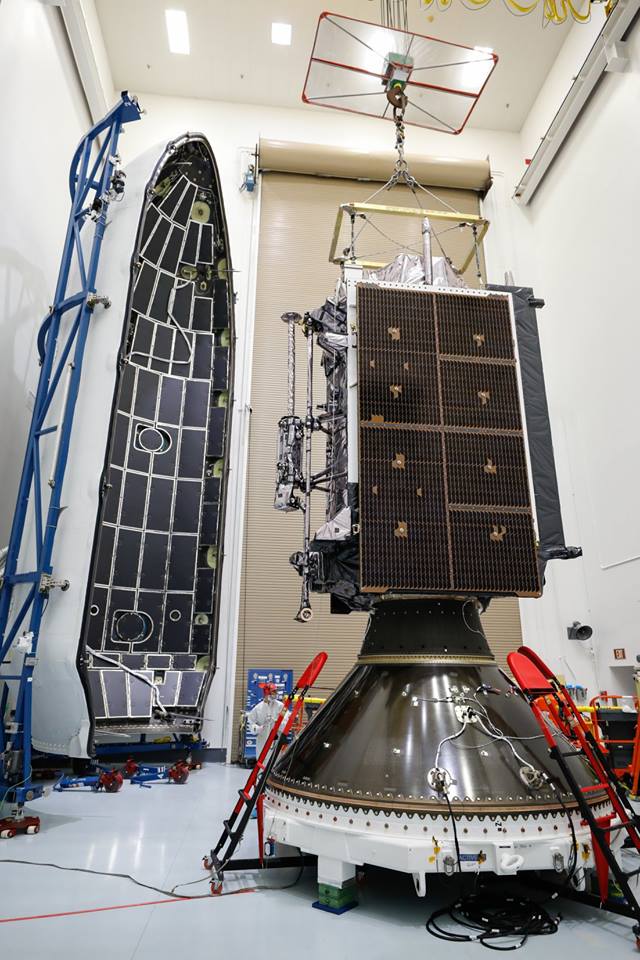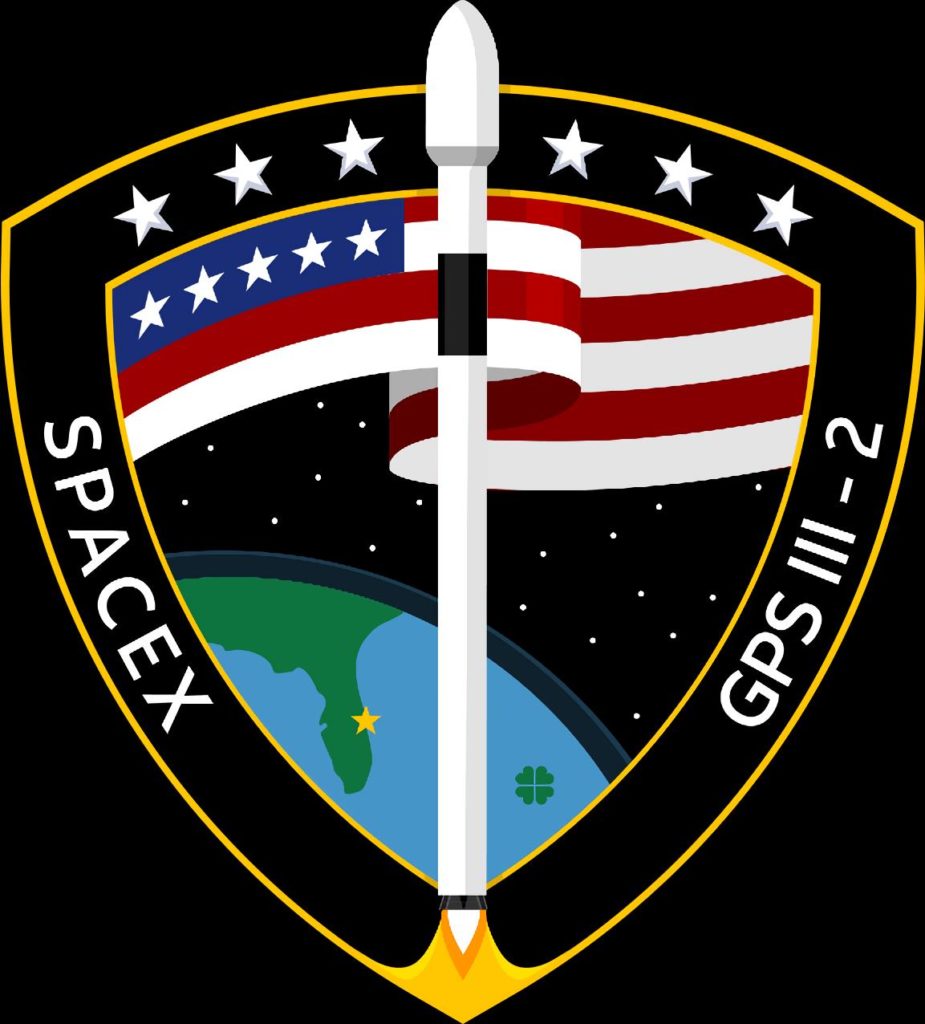RocketSTEM –19 December 2018
CAPE CANAVERAL AIR FORCE STATION, FL- Will the third time
be the charm? After scrubbing this morning’s 2nd attempt to launch
the 1st in a powerful new series of GPS satellites on an expendable SpaceX
Falcon 9 rocket less than three hours before liftoff to continue working on the
technical issue that scrubbed the first launch attempt, Elon Musk’s company
announced late tonight, Wednesday, Dec. 19 that they will attempt a third try
tomorrow morning.
The late breaking news of a third try comes amid forecast of
really unfavorable weather on the Florida Space Coast.
However SpaceX has apparently resolved the technical issue
with the first stage fueling sensor that scrubbed the first attempt Tuesday
morning.
“Team is working toward launch of GPS III
SV01 tomorrow, December 20. Weather remains a challenge; currently forecasted
at 20% favorable during the 26-minute launch window which opens at 9:03 a.m.
EST, 14:03 UTC,” SpaceX tweeted this evening.
Blastoff
of the SpaceX Falcon 9 carrying the modernized and advanced GPS III SV01 satellite
for the US Air Force is now slated for Thursday, Dec. 20 at 9:03 a.m. EST, 1403 GMT, from Space Launch Complex-40 on Cape Canaveral Air
Force Station, FL.
The official Air Force weather forecast only shows a 20%
chance of favorable conditions.
The primary concerns are for the Electric Field,
Cumulus/Thick Cloud, Disturbed Weather rules.
It wasn’t clear until this evening (Wed., Dec. 19) that a launch
attempt would actually occur because SpaceX engineers were sull working the
temperature sensor issue.
The second scrub was only announced by SpaceX at 6:32 a.m.
EST this morning:
“Standing down from today’s launch attempt of
GPS III SV01 to further evaluate out of family reading on first stage sensors;
will confirm a new launch date once complete,” SpaceX tweeted.
The Falcon 9 launch window lasts for 26 minutes
and extends from 9:03 a.m., 1403 GMT, to 9:29 a.m. EST on Dec. 20.
Tn case of a scrub for any reason on Thursday, the weather outlook improves slightly on Friday
to 40% GO. But improves dramatically on Saturday to 80% GO!
You can watch the launch on a SpaceX dedicated
webcast that starts about 15 minutes prior to the opening of the nominal
launch window at:
www.spacex.com/webcast
The Falcon 9 was lowered last night and remained horizontal
at Launch Complex 40 this afternoon as witnessed first hand by Space UpClose
and other members of the news media as we worked to reset our remote cameras at
the pad today.
teams were loading the rockets propellants in anticipation of blastoff of the next and last SpaceX
Falcon 9 of 2018 carrying the maiden modernized and advanced GPS III SV01 satellite
for the Air Force. It had been slated for blastoff Tuesday, Dec. 18 at 9:11
a.m. EST, 14:11 GMT, from Space Launch Complex-40 on
Cape Canaveral Air Force Station, FL.
The Falcon 9 will launch in the upgraded Block 5
version on an expendable mission where the first stage booster will not be
recovered. There are no grid fins or
landing legs installed on the 15 story tall first stage.
This is the first Block 5 model that will launch
in an expendable configuration and not be soft landed either by land or by sea.
The Air Force wants every drop of fuel available
to hurl the GPS III SV01 satellite to the most efficient orbit and maximize the
amount of on-board fuel available and minimize the satellites need to utilize
the fuel reserves for orbit raising maneuvers.
The satellite will be deployed to medium Earth
orbit approximately 1 hour and 56 minutes after liftoff.
The GPS III satellites has a wet weight of 9700
pounds (4,400 kilograms) and
is the size of an SUV.
From the SpaceX Press Kit:
The United States’ Global Positioning System
delivers positioning, navigation, and timing services supporting vital U.S. and
allied operations worldwide, and underpins critical financial, transportation,
and agricultural infrastructure that billions of users have come to depend on
daily.
The United States Air Force’s first GPS III
satellite will augment the current constellation of 31 operational GPS
satellites. This newest generation of GPS satellites is designed and built to
deliver positioning, navigation, and timing information with three times better
accuracy, and up to eight times improved antijamming capability. GPS is used by
over four billion users and supports critical missions worldwide.
GPS is a National Security Space (NSS) mission,
critical to national defense. In April 2016, SpaceX was awarded its first NSS
mission, GPS III SV01. SpaceX currently has an additional four GPS III missions
on contract, all of which will be launched on Falcon 9.
Watch for Ken’s continuing
onsite coverage of NASA, SpaceX, ULA, Boeing, Lockheed Martin, Northrop Grumman
and more space and mission reports direct from the Kennedy Space Center, Cape
Canaveral Air Force Station, Florida and Wallops Flight Facility, Virginia.
Stay tuned here for Ken’s continuing Earth and Planetary science
and human spaceflight news: www.kenkremer.com –www.spaceupclose.com – twitter
@ken_kremer – email: ken at kenkremer.com
Dr. Kremer is a research scientist,
journalist and photographer based in the KSC area.
Ken’s photos are for sale and he is available for lectures and outreach events


